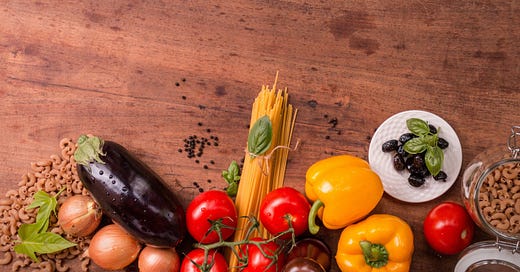
You have a goal, right? At a high level you probably want to be fit and healthy and look good naked. Sure, you may have more specific goals — a beach vacation, a shirtless costume, an upcoming competition — but those high level goals are still part of the picture, for almost anyone.
But what does it take to be fit and healthy, and why does that not necessarily imply you’ll look good naked? In order to see where diet comes into play, let’s split these concepts apart and define them:
Being Fit: In the book by the same name, the authors come to a concise definition about what fitness means: having enough strength, endurance, and mobility for work and play.
Being Healthy: While researchers may have begun defining health as “the ability to adapt” — encompassing physical, mental, and social health — we want to focus in on the physical side of things and use an older definition of health: freedom from disease and illness.
Looking Good Naked: This is probably the most difficult one to define clearly, because attractiveness is very subjective. We’ll have to set aside a lot of the things that make up attractiveness and boil this part down to simply: having good body composition — the ratio of muscle mass to body fat.
More than almost anything else, these three goals are all impacted by nutrition — what you eat and how much.
Nutrition for Fitness

Fitness — sufficient strength, endurance, and mobility — definitely relies more on what you do and how you train rather than what you consume. But nutrition can impact your training performance, and thus, your overall fitness levels. So assuming you’re training properly…
After training, muscle tissues are both broken down and recreated in a process known as protein metabolism. If you don’t have enough protein in your diet, this process favors the breakdown side of the equation, so ensuring you have enough protein in your diet is important for muscle growth and strength gains. A daily consumption of 1g of protein for every pound of bodyweight (2.2g/kg) is a good target.
For any type of physical performance that takes less than an hour, the body relies on glycogen stored in muscle tissues and your liver for energy. Glycogen is simply converted and stored carbohydrates. Ensuring you have enough glycogen stored up, and replenishing it after a bout of exercise, are important for managing fatigue both during and after a workout. A healthy range for carbohydrate consumption is 1.5g-3g per pound of bodyweight (2.7g-6.6g/kg).
Fat is used as an energy source for long term efforts — anything done for over that hour limit for glycogen stores. Aside from that, fat consumption regulates hormones that maintain weight and energy levels. A healthy baseline for fat consumption is in the 50–80g per day range, for most people.
The big important caveat here is that there are plenty of diets that recommend varying rations for all three of these macronutrients (protein, carbohydrates, and fats). And those are fine! These are baseline numbers, and should drift up or down based on your own personal tastes and goals. Just ensure that if one area increases, others should decrease - it’s a balancing act.
Nutrition for Health

Controlling our health through nutrition is fairly straightforward:
Focus on getting enough micronutrients in the food you eat — fruits, vegetables, nuts, whole grains, and meats are what you want to aim for.
Low quality carbohydrate sources — deep fried, highly processed, or cheap fast foods — are very caloric by volume, often with fiber removed and sugar added. This can lead to higher or more regular insulin spikes resulting in insulin resistance which may eventually lead to diabetes.
Highly processed foods are often digested faster, which in turn increases production of ghrelin, a hormone produced in the stomach which tells you you’re hungry.
Harmful substances and contaminants in foods are certainly a thing, but some parts of the internet blow them out of proportion. If you avoid a lot of processed foods, you will avoid almost all of the problem substances (“toxins”). Just make sure you wash your fruits and vegetables before eating them.
Nutrition for Body Composition

While it’s a fact that your weight is based on how much energy you intake compared to how much you expend, that isn’t the whole story when it comes to muscle and fat. Some people gain weight faster or slower, some gain muscle easier, or get fat in one place more than others.
This is called “calorie partitioning” and it is sadly almost all about your genetic makeup and can’t really be changed. But what you can change is down to how you respond to insulin and how you train.
Your body will partition calories better if you’re already lean — so focusing on weight loss through a calorie deficit is ideal, even if you training suffers.
Improve your insulin resistance by getting rid of high-sugar processed foods and high glycemic index foods.
It’s not about nutrition, but getting enough sleep and doing heavy strength training will improve your hormones that help partition more calories toward muscle.
tl;dr
Eat protein, probably around 1g per pound of bodyweight.
Skip low quality foods — fried, packaged, premade, or high glycemic index—as much as possible
Focus on high quality sources of nutrients with lots of fiber or unprocessed fats — fruits, vegetables, nuts, dairy, etc.
If you’re trying to lose weight, you will feel hungry. If you’re trying to gain weight, you will feel full. Recognize this, and accept it.
The rest will fall into place.
Sign up for more posts from Everyday Fitness:


